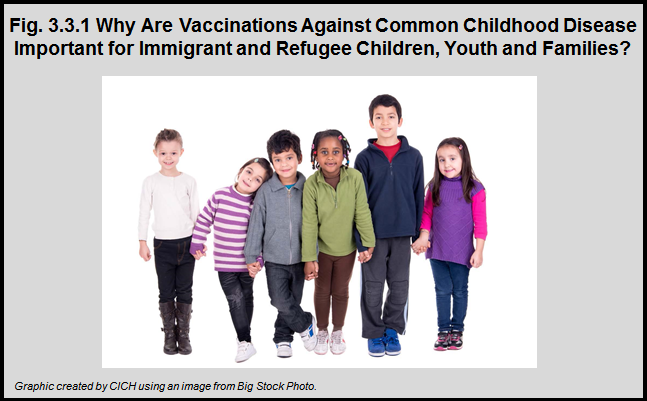Why Are Vaccinations for Common Childhood Diseases Important for Immigrant & Refugee Children?

In the past 30 years the majority of Canadians who were born outside of Canada (more than 70%) have originated from countries where vaccination coverage may be suboptimal or where several of the childhood vaccines that are routine in Canada are not part of the national vaccination schedule.1 These include vaccines against illnesses such as varicella (chickenpox), rubella (also known as German Measles), diphtheria, pertussis (whooping cough), and tetanus. Immigrant children are therefore at risk for these vaccine preventable diseases with their associated morbidity and mortality.2Children and youth (and adults) who are susceptible to vaccine-preventable diseases must be identified and vaccinated to protect them and maintain herd (community) immunity and prevent outbreaks.
1Pottie K, Greenaway C, Feightner J, et al. Evidence-based clinical guidelines for immigrants and refugees. CMAJ 2011;183:E824-925.
2Organization WH. WHO Vaccine- Preventable Dieases: Monitoring System. Geneva: The Organization; 2004.
Implications
There are many obstacles facing immigrant children, youth and their families regarding access to immunization. These are commonly low socioeconomic status, low parental education, younger maternal age, lack of knowledge about the illnesses and immunization, negative beliefs about immunization and fear of bad effects, lack of transportation, clinic hours and cost.3 Effective interventions must be utilized to enable immigrant children and youth to gain access – including education, reducing out-of-pocket costs, reminder systems and providing clinics in non-traditional places such as schools and places of worship.
3Pottie K, Greenaway C, Feightner J, et al. Evidence-based clinical guidelines for immigrants and refugees. CMAJ 2011;183:E824-925
